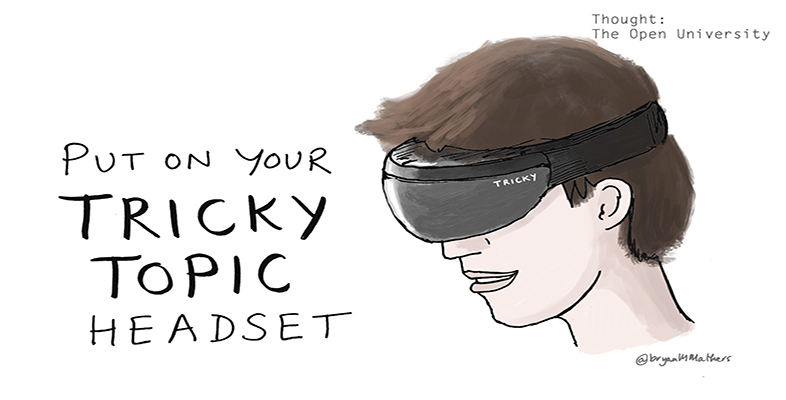3.1 Why are tricky topics tricky?
In Week 1, you saw that threshold concepts focus on cognitive understanding so it will be no surprise to learn that students’ misunderstandings in tricky topics are also focused on cognitive (thinking) understandings, rather than affective (emotional) or behavioural (environmental) issues.
For example, in a mathematical tricky topic such as ‘manipulating decimals’, students might have cognitive misunderstandings about ‘decimal places’ or ‘use of significant figures’. These two problems could be considered as key stumbling blocks of that tricky topic. However, ‘fear of mathematics’, although perhaps present in some students, would not be a specific stumbling block, because it is an affective (or emotional) problem, not a cognitive problem.
Again, following the links to threshold concepts, students’ problems can be categorised according to the theory behind why they have these difficulties in understanding the tricky topics. As tricky topics are a practical form of threshold concepts, the categorisation of them is more practical than the complex theories behind threshold concepts.
Based on a simplified criteria from the original threshold concept theory, there are four main categories used to identify why students have problems in understanding tricky topics as follows:
- incomplete or flawed prior knowledge
- lack of linked concepts
- terminology
- intuitive belief
1) Incomplete or flawed prior knowledge
Students may lack an understanding of, or have an incomplete or flawed understanding of underpinning topics, or scientific method, process or discourse. For example, to understand genetic drift in Biology, students would need a prior knowledge of the process of natural selection. Similarly, in mathematics, students cannot understand scientific notation such as 6.022 × 1023 if they do not understand powers, decimal places or multiplication. Also, thinking they understand when their prior knowledge is flawed can lead students to poor causal reasoning and incomplete conceptualisation (Coley and Tanner, 2012; Keleman et al., 2012). Sometimes flawed knowledge would need to be unlearned before the new knowledge can be accepted.
2) Lack of linked concepts
There are chunks of information that students need to learn alongside the tricky topic (so should be taught at the same time). They are smaller, effectively ‘sub-concepts’ that a student needs to understand in order to grasp the overall tricky topic. Institutional factors might influence how students understand the tricky topic, depending on whether and how these sub-concepts that are closely linked with the topic, have been explained. Without those linked sub-concepts the new knowledge may appear alien. For example, a student believing that fire is alive may be unaware or confused about the formal definition of living or have an alternative belief system. Similarly, when learning about potential difference in Physics, students also need to know about current, volts, voltage and Ohm’s law.
3) Terminology
Words, phrases or symbols can be vague, complex or have multiple meanings (such as having both a common meaning and a scientific meaning) which can be confusing and can inhibit understanding. If students are unable to overcome the difficulty of terminology, they may turn to alternative mental models (Harrison and Treagust, 1996) which are flawed. For example, the term ‘inheritance’ usually means that a child inherits from two parents, but in object-oriented programming inheritance comes from only one predecessor. This causes problems when students later use the term with other related programming concepts.
4) Intuitive belief
The new knowledge may contradict commonly held ‘truths’ or misconceptions, often held since childhood. These ‘truths’ are informal, intuitive ways of thinking about the world which may be strongly biased toward causal explanations. In many cases, as students advance in their understanding of science and technology subjects, they may need to grasp principles which are fundamentally counter-intuitive. Inaccurate presumption of cause and effect can lead to assumptions of meaning. For example, fire moves, crackles and uses oxygen therefore it must be alive or birds have wings so all creatures with wings must be birds. Such issues can also occur if real-life analogies which have been taught previously are too simplistic or flawed.
The next section takes a look at how these categories can be arranged into a problem distiller table.
